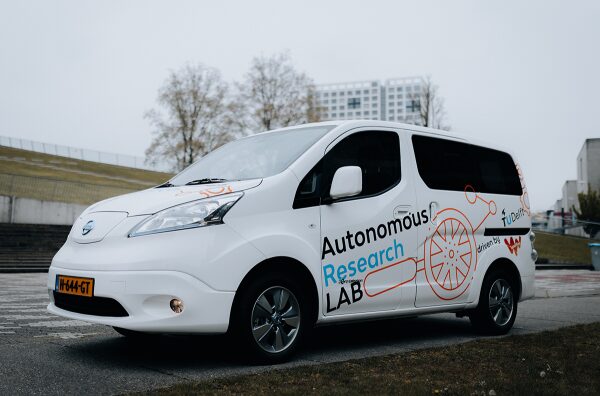How do passengers react in an autonomous vehicle? That’s what the MICD will be investigating from 2022 to 2025 in its promising ‘lab on wheels’, the Autonomous Driving Passenger Experience. With this special vehicle, researchers can test how passengers behave safely and under realistic conditions.
Duration
From March 2022 to March 2025Partners (TU Delft)
TU Delft-CEG, department of Transport & Planning
TU Delft Transport InstitutePartners (other)
Leaseplan Netherlands
Automatically driven vehicles are not yet allowed to participate in traffic, which is a good thing, because the current generation of (semi-)automated vehicles does not yet meet the strict safety requirements of the Netherlands Vehicle Authority. This does, however, make researching automated driving a lot more complicated. After all, how would you go about testing how passengers experience driving in automated vehicles? For starters, driving in a carefully cordoned off test environment is very different from driving in a busy city.
With its Autonomous Driving Passenger Experience, the MICD has come up with a promising solution: a lab on wheels. The car, a Nissan e-NV200 Evalia, is driven by a human driver and can therefore participate in traffic like any other car. However, the passenger compartment behind the driver has been completely redesigned. Test subjects find themselves surrounded by OLED screens, displaying the car’s surroundings in real time. This gives passengers the impression that they’re riding up front in an automatic, driverless vehicle.
In the first phase of the study, the passenger in the back will not have a steering wheel or pedals at their disposal, making it possible to study the behaviour of users of so-called level 5 vehicles: automated vehicles that drive completely independently. In a later phase, a steering wheel and pedals will be installed to study the behaviour of users of level 4 vehicles. At this level, the vehicle can drive itself, but a driver must be on standby to intervene if a dangerous or tricky situation arises. The steering wheel and pedals in the back don’t actually work, of course, and are only used to test how quickly a passenger can take control of a level 4 car when necessary.
Unique opportunities
This innovative lab provides unique opportunities for studying the behaviour of users of automated vehicles. In the lab, researchers can measure virtually anything you could imagine: there are intelligent cameras to recognise facial expressions, as well as eye trackers, heart rate and blood pressure meters, sensors that measure body movements (such as pushing down with your feet when you’re scared) and microphones (vocal responses).

With this realistic sensor data, researchers can – finally – answer questions such as: How quickly do you get used to riding in a level 4 or 5 vehicle? Which traffic situations are particularly difficult or make users especially tense? How do passengers in automated vehicles use their time now that they do not have to drive themselves? How do different people (young/old, male/female, novice/experienced drivers) react to traffic situations? And so on.
